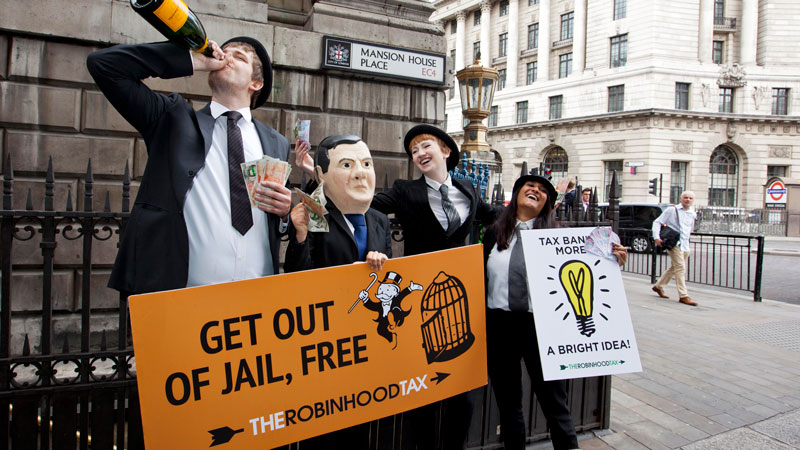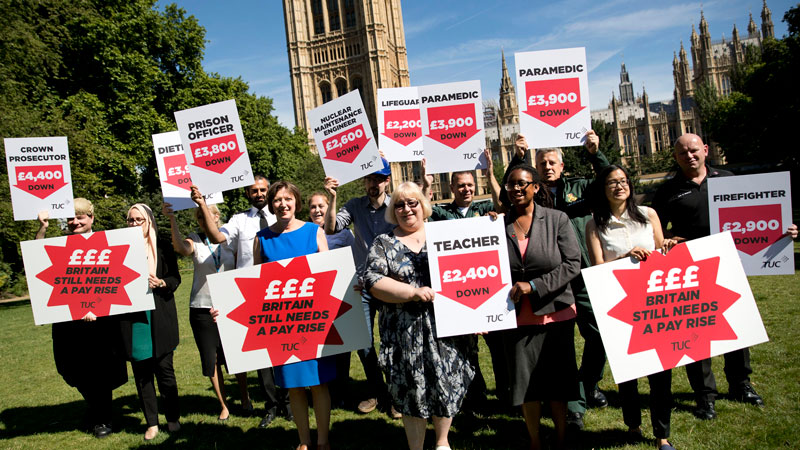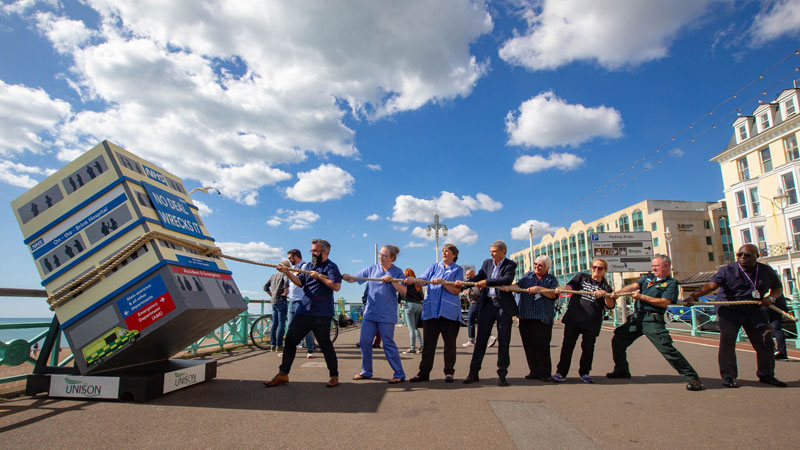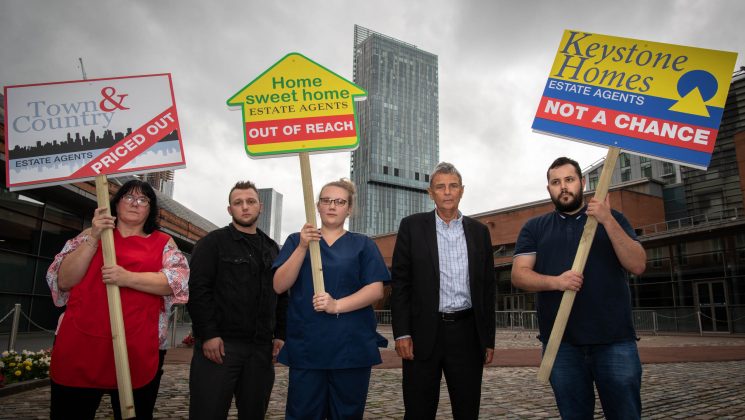Photo: Steve Forrest
A picture is worth a thousand words – or so the old adage goes. It’s certainly true that a good image can help ‘sell’ a story, though getting it right is certainly no walk in the park. But don’t let that put you off – a little bit of planning, a sprinkling of creativity and a lot of luck can go a long way and give your story that much-needed boost.
I’ve organised and run a fair few stunts – many have worked (and been used by the media), while others have looked great but not been picked up. Stunts require a lot of effort and it can be rather deflating when pictures aren’t used, but when they are, it’s a very good feeling.
Photo opportunities I’ve worked on have involved giant hospitals, oversized one-armed bandits, birthday cards, floral clocks and ballot boxes – and a whole heap of dressing up: Victorian costumes, 1960s gear, pyjamas, NHS and council uniforms, and Robin Hood outfits are just a few.

Photo: David Sandison
First, of course, you need an idea, ideally something that’s not been done before. Definitely avoid groups of people standing passively in a row in a nondescript location – and definitely no giant cheques or tree-planting ceremonies, please. Remember, too, that what might seem like a great idea in at the ideas stage may not work quite as well in the cold light of day.
You’re almost certainly going to need props. This might mean a visit to the local fancy dress shop, making placards that light up, or going to a professional prop house (be warned – the latter can prove expensive).
Timing is crucial too. The stunts most likely to work are those linked to events journalists will be attending – like a march, rally or conference – so snappers and camera crews are there already.
Stand-alone photo opportunities can be harder to pull off, but can still work. The best time of the day to hold a stunt is in the morning. Afternoons or evenings are tricky for the media. But do check with your local paper to see what time works best.
Don’t overcomplicate the stunt. Keep it simple. A picture has to work at first glance; if it needs a long explanation, it won’t. Slogans on placards should be short and snappy, with letters large enough to be read at a distance.

Photo: Jess Hurd/reportdigital.co.uk
Also don’t make it too ‘union’. It’s fine to have UNISON branding visible, but too much and it’s branch website rather than local weekly. Do ensure, too, that there’s sufficient diversity among participants and, crucially, that everyone is happy for their picture to be sent far and wide.
If it’s in the open air, keep a close eye on the forecast and have a wet-weather alternative up your cagoule sleeve. Or invest in some umbrellas. Do seek permission from whomever owns your chosen location. If it’s in the street, inform the local council and don’t obstruct any pavements. The last thing you want is to be moved on when the stunt’s in full flow.
To up the chances of success, contact the papers’ picture and broadcasters’ planning desks with a simple operational note, setting out what’s happening, when, where and why. This info isn’t for publication or broadcast (make this clear), so there’s no need for any quotes. Don’t forget contact numbers too. Send this out a good few days in advance and then, the day before, ring up to check the stunt’s made it into the diary.
Compile an email with all the names of participants to send to photographers for captions and a short press release to go with the story. Do have someone with a loud voice to co-ordinate the stunt, so everyone knows what they’re doing.

Photo: Mark Thomas
But even the best-laid plans don’t always come to pass. Sometimes stunts get disrupted by people who don’t like what we’re saying – as happened with this year’s “no-deal wrecks it” stunt at the TUC. Deal with them politely but firmly and remember it’ll all be on camera, so if things look like they’re getting out of hand, it’s best to call the police.
And even if a paper says they’re going to send someone, don’t assume they will. Book your own snapper and get their advice as to what will work. Photographers know the best angles and lighting conditions – plus other details you might not have considered – and can advise on how to co-ordinate people to get the perfect shot. If no one else turns up, ask them to send pictures to the print media you invited.
Job done. Happy snapping.

